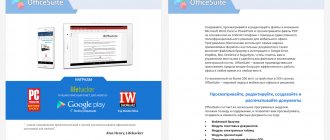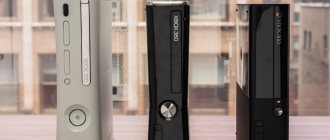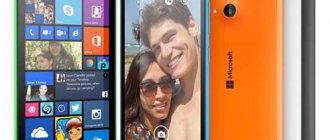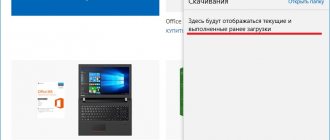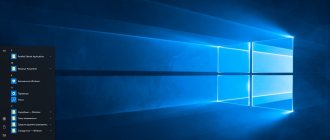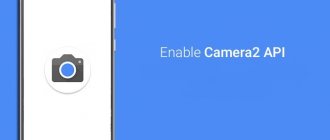At the beginning of this year, the idea of a Microsoft branded MP3 player was alien to many consumers. After all, how could a software giant compete with the iPod dynasty, as well as the likes of iRiver, Samsung and Creative? But after Microsoft announced its new product on September 14, it became clear that the Zune is a special type of portable MP3 player. The Zune supports wireless file transfer technology called Zune-to-Zune and is capable of running within the closed Zune Marketplace system, which is similar to iTunes. The player is available in three colors: black, white and, oddly enough, brown. The device has seen the light of day and will soon satisfy the tastes and needs of perhaps the majority of buyers. This is all thanks to the excellent user interface, good integration with the Zune Marketplace software and good media playback. However, the Zune's incompatibility with some formats, such as WMA-DRM9 and WMV, will force a certain number of users to seek their “happiness” among players from other manufacturers. But even despite such a significant drawback, the Zune with its wireless technologies has a great future.
Now, all the main characteristics of the Zune are known: it is a 30 Gb MP3 player, with a three-inch (4:3) screen on which video and photo files are excellently reproduced, its price ranges around $250. The software is a specially adapted version of Portable Media Center (based on Windows CE) and supports intuitive navigation, such as in a player like the Toshiba Gigabeat S. But there are many differences that separate the Zune from other portable MP3 players. We will try to list them all.
Much to the chagrin of many Windows fans, the device is not compatible with WMA-DRM9 formats (Zune uses WMA-DRM9.1). So media files purchased from online stores such as Napster and Urge cannot be played on this player. Files received by subscription from these servers will not work either. In other words, the Zune is not a platform that will play anything. Instead, the device operates only within its own software and store, with which you can upload files to the player. But, in fact, you don't even need Windows Media Player to sync and manage your Zune. Sure, Windows would win a lot of points if the Zune had the ability to work with multiple online stores built in, but the player is officially optimized for the Zune Marketplace.
While the player is similar to other players in such basic capabilities as music, video and photo playback, plus an FM tuner, what makes it unique is this: the Zune has a built-in Wi-Fi chip that allows it to search and be found by other players Zune. This allows Zune owners nearby to share music and photos (but not video), but only with limitations - a usage limit (three plays of one song within three days is the maximum). On the other hand, public viewing of photographs is not limited in any way. I wish Wi-Fi would allow me to purchase files, download files, and even just see other Zunes on a global scale. But when using the player, it immediately becomes clear that Microsoft started small. Either way, Wi-Fi enabled or not, the Zune is an excellent media player.
Briefly about the box and its contents: the Zune package is minimal, but has its advantages. So, when you open the box you will see the Zune itself, a brown ribbon, headphones, and a USB cable. You won't see anything else until you open the flaps of the box. There you will find a case, software disc, instructions and a sticker. Of course, I would like to see more - for example, a power adapter. But overall, everything looks pretty good.
- 1.0.0.1 Does size matter? The first in the series is the Zune 30 Gb, followed in order by the iPod 30Gb, Toshiba Gigabeat S 30 Gb and 30GB Creative Zen Vision:M
- 3.0.0.1 Players exchange files
The Zunes are partially unpacked and the box is quite elaborate (a lot of design thought went into it). The box contains the Zune, a soft protective mat, a soft case, a USB cable, a software disc, a couple of instructions and, of course, a Zune sticker
Case design
With a body size of 10.9 x 6.35 x 1.78 cm, the Zune may be a little thicker and a little bulkier than a 30Gb iPod, but the Zune still feels right at home in the palm of your hand. Player weight 159g. It's not too thin, but not so big that it weighs down your pocket. But in some protective cases, the player may indeed seem too large and may turn off a certain number of users.
Size matters? The first in the series is the Zune 30 Gb, followed in order by the iPod 30Gb, Toshiba Gigabeat S 30 Gb and 30GB Creative Zen Vision:M
The body is made in muted colors and covered with translucent frosted glass. More importantly, there are no fingerprints on the body, which cannot be said about the screen.
The dual color effect (green in the brown player, bluish in the black, transparent area in the white) definitely gives the device a visually cheerful feel. The built-in battery is enough to play 14 hours of audio. Another interesting point is that there is a sticker on the back of the player that says “Greetings from Seattle.” It can also be said that the Zune, made by Toshiba but completely developed by Microsoft, is an original looking device with its own style.
This is a reliable player that is protected from scratches and shocks. Although at first glance at the device you might think that it would shatter upon the first fall. The case is made in a minimalist style, without control buttons on the sides, it has only a “hold” switch and a headphone jack on top and a USB port (also a port for additional devices) on the bottom. The screen and main joystick are surrounded by a thin metal frame, while the remaining buttons (back and play/pause) are integral with the body.
Top: hold switch and headphone jack, bottom: USB port. The Zune's interface isn't exactly cluttered
You might want to spin the player's joystick the second you pick it up. Probably, if the player had a joystick like an iPod, its control would become easier than it actually is. But in reality, controlling the 5-way joystick (d-keyboard, made of black plastic) is quite convenient and does not cause any particular complaints. When you select landscape mode (viewing photos and videos), the joystick is reoriented. Unfortunately for left-handers, you cannot configure the screen and joystick for left-handed use. It is also inconvenient that the player does not have a volume control button located on the body. You can change the volume by going to a special menu using the joystick up and down buttons.
There is a circular recess on the back of the case that mirrors the D-keypad on the front. This is supposed to give you a better feel for the joystick, especially in landscape mode.
The back of the player is empty, with only a circular indentation, the Zune logo and the words "Greetings from Seattle" on it.
Of course, the Zune's three-inch screen can't compare to portable video players like the Archos 604, but it's good enough for viewing photos and videos. The screen has three brightness settings. And although the display is a little washed out, it has good color and brightness for outdoor use. Conveniently, you can turn off the backlight on a particularly sunny day. You can set the brightness to minimum for energy saving mode.
Interface
The device interface is attractive, intuitive, and you can also customize it using your photos and pictures. The main menu includes options such as – Music, Video, Photos, Radio, Community, Settings. As mentioned above, navigation allows you to conveniently find albums, artists, genres, and playlists without returning to the main menu. Lists can be quickly scrolled through using the up and down keys. As you scroll through album titles, the short description corresponding to each one will disappear. If you call up the information menu while watching a video, the video will play in the background.
The player's large screen makes it easy to browse content - up to 10 songs per page (less when viewing albums with their covers). Preview images for photographs are small in size, but their number, on the contrary, is large. During playback, album art is displayed on the screen, covering approximately 70% of the screen. A nice, round, flashing indicator lets you know which part of the song you're currently listening to. The same marker is used in the volume control, which is located in the upper left corner of the screen.
When you press the center key of the joystick while playing any media file, a context menu will open. For music - you will be able to select a playback mode, set a rating for a given song, view a list of songs, mark a song for subsequent transfer to the Zune list. It's strange that you won't have access to equalizer settings using this menu.
Devices
The first generation of Zune (2006) - Zune 30 - was a very interesting device, it seems to me. It had 30 GB of internal memory in the form of a hard drive (hence the name - 30), had a Wi-fi module for synchronization with branded services, multiplayer games, as well as connection to a computer or another Zune. Although, about games: I don’t think this is plausible, because playing on such a small device, where there are practically no convenient and familiar ways to interact with the interface, is not the best idea, but the information indicates the opposite. The screen was 3 inches diagonal and 240x320 resolution. The device offered the ability to listen to music for 12 hours or watch videos for 3.5 hours. The device was produced in five colors (white, black, brown, pink and hot pink), in addition to which there were limited editions such as red, pink diamond, orange, Halo 3 brown, Halo 3 black, and others variations of black design (Adult Swim, Microsoft Interns). For navigation, a circular pad was used, which did not work similarly to that on the iPod, but as a regular d-pad. The device was manufactured by Toshiba, commissioned by Microsoft, of course.
Zune Software for the first Zune and, in fact, the Zune itself
.
The second generation of Zune (2007-2008) - Zune II - continued the design idea of the first device. The second generation now had several variations that differed in the capacity of the internal memory, which, it is worth noting, has already become an SSD (flash), although not in all models. In total, the Zune II line includes 5 devices, the number in the name of which indicates the internal storage capacity: Zune 4, Zune 8, Zune 16, Zune 80 and Zune 120. The older models (80 and 120) still used a hard drive. There are no major differences other than storage capacity. Otherwise, it was the same device, which had a screen with a resolution of 240x320, but the diagonal was smaller than that of the first-born - it was only 1.8″. The device also became smaller than the first generation - here the dimensions are 4.1 x 9.1 x 0.8 versus 6.1 x 11.2 x 1.5 for the Zune 30. The device also had a built-in Wi-Fi module that allows you to do everything the same actions, I see no reason to repeat. The way of navigation has changed - now Microsoft offers not just poking buttons, but also using the touch potential of the navigation device. The second generation Zune introduced the ability to move up and down the menu simply by moving it in the right direction (similar to Blackberry smartphones). However, push-button control has not gone away. The battery, it is worth noting, now made it possible to listen to music for 24 hours without stopping or watch videos for 4 hours in a row in a similar mode. The model was produced in five colors (black, green, red, pink and blue), and there were also limited editions (a lot).
Zune II in different colors, the sizes are the same, these are pictures of different sizes :)
The latest Zune model (September 15, 2009) - Zune HD - seems much more interesting. This model had a touch screen and could quite successfully compete with the iPod touch version. The characteristics of the device, it seems to me, were quite good - NVidia Tegra (for watching videos in HD mode), multi-touch capacitive screen, 16/32/64 GB of memory and Wi-Fi for accessing the Zune Marketplace and Internet surfing. The device offered to listen to music continuously for 33 hours or watch video in HD mode for eight and a half hours. There was also a docking station for the device, which even allowed the device to be connected to a TV.
Peculiarities
In this section, you can immediately notice the difference between Zune and other media players. They are especially easy to see for true lovers of portable media devices. The player we are reviewing is capable of playing MP3, protected WMA files (named WMA-DRM9.1), and unprotected AAC files. But there is no way you can force it to play WAV, Audible, WMA Lossless files.
With video support the situation is worse. Moreover, there is no content on the Zune Marketplace yet (in the future it will be possible to order video files, the number of which will exceed two million). The player supports the WMV format - the Zune software converts MPEG-4 and H264 formats to the WMV format. But there is no compatibility with DRM, and in order to play DivX and XviD files, you will have to convert them to WMV yourself. It's too bad that video support is so weak, since the player's screen is very good (better than that of an iPod), and playback control is very precise. The video supports an unlimited number of bookmarks. The player can be connected to a TV to play video, supporting the Zune interface. But the files will only be played back in a compressed size, and accordingly the quality of the original picture on the TV screen will be lost. Microsoft still has work ahead of them if they want to make the Zune not only a good audio device, but also a good video device. But again, this is not a hardware problem, apparently Microsoft is trying to simplify everything, perhaps to attract new buyers who are interested in portable media equipment. And then, when the community of Microsoft player owners grows, the Zune will acquire new functionality.
Photo support is also limited, only JPEG files can be used, as the Zune software won't convert other formats. A big plus is the ability to wirelessly and unlimitedly transfer photos to other users. However, this feature is useless if there is no other Zune player nearby. You can listen to music while viewing photos and slide shows, but you can't assign a specific song to a specific slide show. Transitions to the slide show can be made in time increments from 3 to 15 seconds. But only one type of transition is available - disappearing from the screen. When viewing photos, you can change their scale.
The radio interface is minimal and very easy to use. On the screen you see a line above which numerous FM stations are signed. There is no automatic station scanning mode as such. When auto-scanning, the player will transfer you to the next channel, which works without interference. I'm pleased with the built-in RDS system, with which you can see the name of the station, the genre of the song on the display, and on some channels you can also get information about the name of the song.
Initially released Zunes do not have the Community option, transferring files over Wi-Fi. So all released players will receive the new firmware when connected to the Zune Marketplace.
Sharing content using Wi-Fi technology is a very interesting feature, but unfortunately it is limited by the distance of about 9.5 meters for data transmission. Microsoft said that in open space this distance can reach 13 meters or more. Plus, you can't just go and get full access to the data on someone else's Zune. The only way to “contact” is to exchange music, but not to “steal” it. The player takes 2-3 seconds to find other Zunes in its range. The function works something like this: you turn on the Wi-Fi function, select the “Community” item in the main menu, and in it the “Nearby” sub-item. If there are other Zunes nearby, you'll see it on your screen. You can also see what the owners of these players are listening to at the moment, for example, “Listening to the radio on wave 106.0.” You can find all the files that you received in a special folder - received files. This allows you to differentiate between the temporary library of newly received files and your permanent library. You can delete files from the “received files” folder one at a time or all at once.
Menu items
- Quickplay – a tab for quick access to multimedia files. You can also quickly access recently added or played tracks here.
- Collection – this tab displays all multimedia files that are located in folders for storing them. These folders can be specified either when you first start the program or in the Settings menu. You can arrange all the music and images to your liking. You can watch or listen to any song or video here, using a convenient player.
Please note that the options are different for each menu section. Those. if you want to change the settings in the collection, then open the parameters from this section.
- MarketPlace - this tab is designed to search, purchase and download programs and games from the official Windows Phone Marketplace store. Both paid and free applications are available in the store. For example, the free Sberbank mobile application and many others. In order to make purchases, you need to log into the program using your Windows Live ID (read about how to get it in the article about a WindowsPhone account).
Important! Marketplace was removed from Zune a while ago and clicking on the store won't open it. In order to be able to use the store, you need to do the following: Open the registry editor Regedit.exe, go to the address [HKEY_CURRENT_USER\Software\Microsoft\Zune\, create the FeaturesOverride section there, and in it the key “Apps”=dword:00000001. After this, you need to restart your PC.
Applications are not saved on the computer, but are installed directly on the phone, so if at the time of purchase it is not connected to a PC, the application or game will be downloaded to your device within 24 hours using mobile Internet or Wi-Fi.
- Phone – this section displays files located on your Nokia Lumia smartphone (or any other Windows Background 7 device).
Software and General Performance
Based on the design of Windows Media Player, the interface is clean, clear and stable. It is also pleasant purely aesthetically, but coupled with its beauty it has great functionality. The left area of the window shows all the contents of the player, divided into music, videos and photos. The area of incoming, received files, and all files that you have marked separately from others is displayed at the top. Here is an example of the usefulness of the function of displaying received files: a friend sent you a song, at the moment the period when you can use it has expired, but it will still be displayed in received files. What if you want to buy it? Just select the search function from the context menu and Zune will find where you can buy it.
The Zune Marketplace Jukebox features are pretty standard - burning, ripping and managing music. While experienced users would also like to see functions such as transcoding and recording. Zune Marketplace allows you to share media files directly with the Xbox 360 (via USB port).
The Zune Marketplace started out with about 2 million songs in stock (and they're only compatible with Zune players). A subscription to this service will cost $14.95 per month. Users must create an account and use it to purchase so-called points to purchase songs. Currently, 79 points equals 99 cents. As mentioned above, video files are not yet available for purchase. The process of ordering a song and downloading it from the Zune server is fast and convenient. There are many descriptions of albums, genres and artists. But the inconvenience is hidden in something else, namely... when you exit the program, the last page visited in the Zune Marketplace is not saved. In other words, if you select an album on the Marketplace server and then go to the library, then the next time you connect to the Marketplace you will find yourself on the site's home page. In conclusion, we can say that the entire Microsoft Zune file download service is organized very well, and I’ll say it again, it’s convenient and easy to understand. And it undoubtedly takes precedence over the iPod in organizing Internet services.
As mentioned above, the battery can provide 14 hours of music playback. With Wi-Fi enabled, this time is 13 hours. When using the player in intensive mode (continuous music playback, file sharing, viewing photos), the battery runs out after 10 hours of use.
The Zune boots up fairly quickly, especially from power-saving mode. You may notice a slight pause when navigating through the menu, but it is so insignificant (as with other players) that it is not worth focusing on it. The sound quality is excellent, very close to the sound of the Toshiba Gigabeat S. The sound is well balanced and clear. The headphones are also of very good quality, which is evident both in appearance and in sound. However, there is one small complaint: when the Wi-Fi function is activated, a second hiss appears in the headphones. This is an unpleasant thing, but fortunately it does not appear often. The equalizer has seven settings, all of which do their job well, but most users will miss the ability to customize the equalizer to their liking.
We can say that everything in the player - from video/audio playback to screen quality, from menu navigation to music transfer, everything is done perfectly.
All Microsoft Zune functionality captured on video
“We'll be in this business for a long time. There will be a lot of devices coming out in different categories,” says Matt Jubelirer, Zune product manager, at the beginning of his interview with renowned podcaster Robert Scoble (video, 40 min 27 sec; 120 MB), where he showed in great detail Zune functionality. The Zune platform launch is scheduled for November 14th. Along with the release of Zune, a specialized program for PC will appear and the online music store Zune Marketplace will launch, where you can buy unlimited access to music content for a small subscription fee.
During his conversation with Robert Scoble, a Microsoft product manager pulled out a small suitcase containing three Zune devices in different colors. He listed all the known features of Zune, and also talked about Zune Wireless Sharing, a file sharing function. According to him, this is the main distinguishing feature of the Zune, a key function with which it will create a community around digital music. Today, listening to digital music is a personal experience, and with the release of the Zune, that will change. True, Steve Jobs already laughed at this function.
The second major difference is the three-inch screen, which is “dramatically” larger than the competition. Matt Jubelirer chose to remain silent about screen resolution. The screen is covered with a protective coating, which often causes glare - this is clearly visible in the video.
The player is easy to use. This is done through a system of horizontal and vertical menus. For example, in the “Music” section we can navigate through the horizontal menu “Albums”, “Artists”, “Songs”, “Genres”, “Playlists” - and the list of items in this category is instantly updated on the screen. Thus, when you select the “Albums” menu, the display shows CD covers and their descriptions. For each video clip or music file, you can go to the menu where there are the “Send” and “Flag” options.
After pressing the “Send” button, the built-in radio transmitter begins to search for devices that are within its range. When he finds it, then after the recipient’s consent, it becomes possible to physically copy the file. Copying one MP3, WMA or AAC song takes 10-15 seconds. Video cannot be copied, although it can be streamed to other displays. After copying, the audio file remains available for three days, and you can listen to it no more than three times. All files are protected with DRM.
Unfortunately, the protocol does not allow you to transfer a file to several devices at once, but only to each of them in turn. You can only send a file to another Zune, and not to any other device. In this way, Microsoft hopes to create a community of users.
Content tagging is also one of the important functions, because it makes the recommendation system work.
Matt Jubelirer went into detail about the "wheel" on the player, which is actually four wheel-shaped buttons plus another button in the center. To the left and right of the “wheel” there are two more buttons, so that all manipulations are conveniently carried out with one finger. This convenience continues when you rotate the Zune 90 degrees and place it in a horizontal position.
You can set any photo as your background image, so you'll never confuse your Zune with someone else's. The background image remains translucent as you navigate through the various menus.
The built-in FM tuner accepts not only analog, but also digital signals in RBDS format. It shows on the screen the name of the radio station, its genre, as well as the topic of the current program that is currently on air. There is, of course, no radio signal recording function.
When asked if there would be any games on the Zune, Matt Jubelirer said that this is not yet possible because the Zune and Xbox have different development teams. But in the future this is quite possible.
Matt Jubelirer emphasized that Microsoft independently designed the Zune from scratch, including creating all of its software, which will be updated frequently. For example, the next firmware version may include support for podcasting and other functions.
The Microsoft Zune will hit retailers at the start of the Christmas rush, on November 14th, in the US only. It will be easy to recognize the Zune on a store shelf: although it is small, it has a very stylish box.
